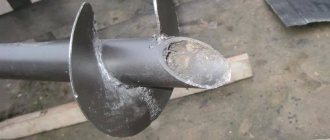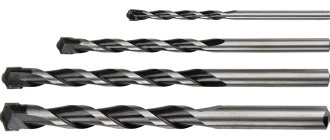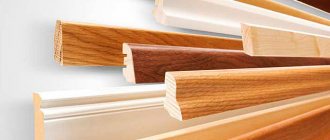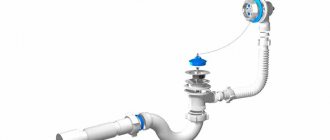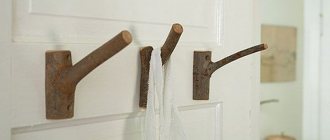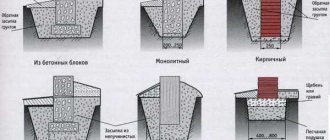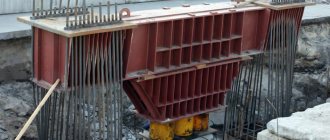Overview of products
Screw piles are represented by a metal pipe, the working tip of which has blades. Such products are used to create supporting structures for fences or small lightweight buildings. The most relevant soil types are heaving and with complex terrain. From the soil side, during seasonal movement, a load within 0.2 MPa can be exerted on the foundation; piles have a tensile strength of 330 to 600 MPa. That is, the products are not afraid of heaving.
Screw piles are available for sale in several types according to their design:
- Narrow-bladed . Here the tip is cast and connected to the base by welding. The end can be blunt with teeth along the edge or pointed. The first is used in permafrost conditions, the second copes well with soil in which there are rocky and fragmentary rocks, dense rocks.
- Broad-bladed . There is one cast blade. There can be one or 1.5 turns. The tip of the pipe itself is sharpened.
- Multilobed . An analogue of the wide-bladed sample additionally has several blades on the base at a distance from the side turns. This makes it easier to lean on the soil walls and compensate for vertical movements in the hole.
Types of screw pile tips by design Source sk-resultat.ru
The characteristics of screw piles can depend on both the size and the type of tip:
- Welded . This is a budget option made from a pipe and a welded blade. It is better not to use such piles for critical structures. Due to their ease of manufacture, they are often counterfeited, and the quality of the weld can only be assessed in practice. Often tearing occurs during installation or the joint quickly collapses due to corrosion. Optimal use is temporary buildings and fencing.
- Cast . Here the blades with a tip represent a one-piece structure welded to the pipe. Here there is a more accurate geometry of the products and an increased thickness of the base (13 mm versus 5 mm for welded analogues). This arrangement of screw piles is reliable; they cope well with obstacles when immersed in dense soil. However, here too, quality suffers among artisanal producers. They are careless about casting technology, use cheap steel, and skip the heat treatment stage.
Cast tips for screw piles Source prom.st
Separately, craftsmen highlight samples with thickened walls. They are made from tubing and are considered good competitors to cast piles. Here the main difference between the barrel is its resistance to corrosion, which justifies its durability.
Among the advantages of screw piles in general, the ability to carry out installation in compliance with technology in any weather conditions stands out. However, it is worth noting two important limitations in use. The pipes can withstand little load, and the metal is susceptible to corrosion. That is, for the construction of a monolithic or multi-story building weighing over 60 tons, other options for constructing a foundation will have to be considered.
Mechanical installation of screw piles in winter Source bel-svai.by
See also: Catalog of companies that specialize in repairing foundations of any complexity
Durability is also determined by the quality of the weld and protective treatment. Among other things, if there are repeaters, power plants, railways near the house, or the soil has a high level of moisture, then the pile-screw structure will be subject to increased aggressive influence and will serve even less.
Content
- Advantages of screw piles
- Limitations for screw piles according to the International Building Code
- Which soil is not suitable for screw piles
- Requirements for the structural elements of a screw pile
Almost 200 years ago, the first building on screw piles appeared in the United States. It was the Stonington Harbor Lighthouse in Connecticut: a ten-meter stone tower connected to a stone keeper's house. This lighthouse is still intact.
Screw piles were developed by a young Irishman, Alexander Mitchell. Lighthouses and piers, railway bridges and overpasses were built on “Mitchell screw piles”. The advantages of screw piles were obvious:
- speed (ready to use immediately after installation);
- manufacturability (it is clear that piles for industrial use are not screwed in manually);
- low cost (they are always cheaper than reinforced concrete foundations);
- independence from climatic conditions (they can be installed even in frost or heat from -35 to 35 degrees Celsius).
- independence from ground water: no need to worry about swelling soils and no need to drain the site.
Watch a video about how easily you can drill piles even in winter:
Size range
Screw piles can have welded or cast tips. In terms of reliability, the second ones are considered the best, especially those with a polymer coating. However, for engineering calculations when drawing up a project, technical parameters such as weight, length and diameter of products are considered important. The table shows the ratio of dimensions and weight (in kg):
| Length (in m) | Pile diameter (in mm) | |||||
| 57 | 76 | 89 | 108 | 133 | 159 | |
| 1,65 | 11 | 12 | 14 | 22 | 27 | 38 |
| 1,8 | 11 | 13 | 15 | 23 | 29 | 41 |
| 2 | 12 | 14 | 17 | 25 | 31 | 45 |
| 2,5 | 14 | 17 | 20 | 30 | 38 | 55 |
| 3 | 16 | 19 | 23 | 35 | 44 | 64 |
| 3,5 | 18 | 22 | 26 | 40 | 51 | 74 |
| 4 | 20 | 25 | 29 | 45 | 57 | 83 |
| 4,5 | 22 | 27 | 32 | 50 | 63 | 93 |
| 5 | 24 | 30 | 36 | 55 | 70 | 102 |
| 5,5 | 26 | 33 | 39 | 60 | 76 | 112 |
| 6 | 28 | 36 | 42 | 65 | 84 | 121 |
| 6,5 | 30 | 39 | 45 | 70 | 90 | 131 |
| 7 | 32 | 42 | 48 | 75 | 97 | 131 |
| 7,5 | 34 | 45 | 51 | 80 | 103 | 150 |
| 8 | 36 | 48 | 54 | 85 | 110 | 159 |
| 8,5 | 38 | 51 | 57 | 90 | 116 | 169 |
| 9 | 40 | 53 | 60 | 95 | 124 | 178 |
In the private sector, as a rule, three types of pile supports are used. Products with a pipe diameter of 76 mm are suitable for simple enclosing structures and outbuildings. For recreation areas, workshops, and fences with brick pillars, screw piles with a base cross-section of 89 mm are used. For a foundation for a frame house or a small log house (timber, log), it would be optimal to choose 108 mm. For a heavier foam block building or log hut, the maximum option is 133-159 mm. Let's take a closer look at the information on the sizes of screw piles.
The length can be changed on the construction site or on the production line if necessary. The diameter of the screw piles is mainly included in the design documentation. The choice of parameter is governed by the following factors:
- Soil . Composition, humidity changes and groundwater levels are important here. Information can be obtained through geological survey.
- Relief . For a straight section and an inclined section, you will need piles with different parameters.
Pile-screw foundation on a slope Source odstroy.ru
Typical supports, their diameter and supported weight
The dimensions of the piles and their length must correspond to the category of the structure. Typical dimensions of conical supports used in private construction have the following parameters :
- SV89x250;
- SV108x300;
- SV133x350.
The first digital value indicates the diameter of the stem part (mm), and the second - the diameter of the helical blade. For light-weight structures, which include fences and garden buildings, a support with a barrel diameter of 76 mm is suitable. Fences with brick pillars, country outbuildings, hanging structures and gazebos are installed on cones with a diameter of 89 mm. For a small wooden house made of timber and logs, as well as frame buildings, galvanized blade rods of a slightly larger size (108 mm) are suitable. Well, our rating is completed by the most powerful examples of load-bearing foundation elements (133 mm), which can more than withstand the onslaught of a heavy log hut and foam block structure. In order to accurately calculate the dimensions of the required piles with a tip, you need to know at least the approximate weight of the future mansion.
Parameters of frequently used supports
A few words about installation
Unlike other types of foundation, a pile-screw foundation does not require the removal of the fertile layer of soil and the formation of pits with holes. Here you can limit yourself to marking the territory and forming a small hole slightly larger than the diameter of the blades. This will make it easier to start screwing in the pile.
According to the technology, installation of screw piles can be done mechanically or manually. Here you will need to make a through hole to insert the levers. The main thing is to maintain a strict vertical position of the pipe. After screwing in all the piles to the required depth, the protrusions are leveled horizontally, and the excess is cut off with a grinder. Concrete is poured inside the pile pipe to increase the reliability of the support and reduce the risk of corrosion. Metal caps are then welded onto the edges for mounting the lower frame from the beams.
Screwing in piles manually Source rabotai-sam.ru
Which soil is not suitable for screw piles
Features of the soil for which screw piles would be irrational and even dangerous were formulated by FORUMHOUSE user with the nickname Igor3.
Weak-bearing soil - the pile can be easily screwed in to its entire depth or rotates freely without twisting. Faced with this phenomenon, usually the pile is welded all the way to solid ground, but:
Igor3FORUMHOUSE user
The depth to solid soil can be more than 7 meters, which makes this type of foundation no longer rational.
Hard ground. This is a fairly common phenomenon: the soil is so hard that the metal cannot withstand it; a conventional screw pile with blades simply cannot be screwed in.
Rocky soil . Even small stones in the path of the blades make screwing difficult or impossible.
As with all types of buried foundations, lateral soil support is required for screw pile foundations. In clause 1810.2.1 of the International Building Code IBC, for screw piles that are installed in fluid soils or water and are not interconnected in groups, the following requirement is mandatory:
The depth of penetration of the pile into dense soils is at least 1542 mm, and into soft soils it is at least 3048 mm.
Briefly about the main thing
Screw piles are metal pipes, the working tip of which has blades with one or more turns.
Products are distinguished by type of tip: shape, number of blades, with welded or cast tips.
Depending on the design of the tip, piles are used for the construction of a support system on various soils.
The purpose is also determined by the dimensions of the piles: diameter and length.
As the dimensions of the product increase, piles are used to install picket fences, outbuildings, light frame or block, monolithic houses.
The pile-screw foundation has one significant drawback - if the structure weighs more than 60 tons, then it is recommended to choose a different, more powerful type of foundation.
Ratings 0
Purpose
This development did not appear by chance, because everyone knows that for lightweight structures, winter heaving turns into a serious problem, especially when it comes to building a wooden house on watery clay soil. Even deepening the support below the frost line may not give the desired result, since the light weight of the building does not counteract the significant heaving forces acting on the lower segment of the base, and it is completely or partially pushed upward. And only thanks to the expansion that screw-type screw piles are equipped with, it is possible to avoid such troubles.
Pile-screw foundation
A dense layer of soil securely holds the blade, and the metal pin remains in place. Here you don’t have to worry about pile rupture, since the tensile strength characteristics of steel correspond to 330 – 600 MPa, while heaving forces do not exceed 0.2 MPa.
Head for screw pile
As noted above, the head is not a necessary element of the pile if the grillage is made of metal beams or reinforced concrete. However, in the construction of residential buildings, wooden framing is most often used. It requires a flat base for the ends of the piles. Therefore, headers are necessary in this case.
The head is made quite simply:
The pipe is presented in the form of a cylinder with a diameter slightly larger than the diameter of the pile body - so that it can be put on the pile. The length of the segments is about 10-15 cm. A square or round sheet of metal is welded onto the cylinder. The result is a cap-shaped design. Particular care must be taken to ensure that the cut of the pipe is strictly perpendicular to its axis.
As a rule, to fasten the timber, holes are drilled in the heads for powerful screws - usually in the corners of the rectangle.
Stiffening ribs are welded onto the head from below
Screw pile head
The heads are made separately from the piles and are welded during the installation of the foundation - after the plane has been raised.
Installation technology
Installation of a pile foundation with a grillage for aerated concrete is carried out in accordance with SP 24.13330.2011 and “TTK. Concreting the pile grillage." Work on the installation of the foundation includes: calculation, preparation, installation of a pile field and grillage. We will tell you about each stage in detail.
How to calculate a pile-grillage foundation for aerated concrete
The calculation is carried out on the basis of current SNiP and includes two parts:
Calculation for a pile field
- Dimensions of pile supports. They depend on the area and weight of the aerated concrete structure and the type of soil on the site. The size of the supports must be chosen in such a way as to effectively absorb the load from the structure and prevent its settlement. Piles are installed not only around the perimeter, but also under all load-bearing walls of the future house. The cross-section of bored supports is determined according to the table:
Important! The selected cross-section and distance between the supports should provide a load-bearing capacity of the piles that will be 5-10% higher than the actual load. The effective load is the weight of the house made of aerated blocks in the finished state, i.e. with external and internal finishing, drains, etc.
Pile blade and its installation
The blades of the piles are the element that ensures the transformation of torque into driving moment. There are several types of blades for screw piles and methods for their installation.
The blades can be in the form of:
- Solid screw
- Prefabricated screw from several blanks
A solid screw makes up one so-called lead or turn. They have the highest structural strength, but the force for screwing a pile with such a screw is higher than that of piles with several turns of a spiral.
The method for manufacturing a single-thread blade is as follows:
- Marking a workpiece, which is a sheet metal washer
- Cutting blanks
- Laying out the workpiece - that is, turning it into a spiral.
The workpiece is a circle with an outer diameter of about 15-30 cm, depending on the diameter of the pipe for the pile. Inside the large circle, an inner circle is cut out, the diameter of which is equal to the diameter of the pipe. The result is a flat ring or washer.
To give it the shape of a blade, a cut is made in the same way as creating a spring washer. It can be done in a straight line from the center to the diameter, or along a specially marked curve - depending on the required shape of the blade.
Pile blade blank
For the blade, a sheet with a thickness of 5-7 mm is usually taken, and its cutting requires a high cutting ability of the cutter. It is best to use plasma cutting, but gas cutting is also possible. The highest quality workpieces are obtained using laser cutting of metal. It is recommended to carefully sand the inside of the ring, which will ensure a better welded connection to the pipe body.
The resulting washer is routed in the following way. The area opposite the cut should be clamped in a vice and the ends of the blade should be pulled apart - with a crowbar or a pry bar. This is a fairly important operation - you need to constantly monitor the shape of the blade so that it subsequently “sits” correctly on the pipe body.
The resulting blank in the form of a blade can only be welded to the body of the pipe, above the pointed end. Higher quality of the blade is ensured by its narrowing towards the tip, but this requires cutting the workpiece according to a specially prepared template. It can be cut out of thick cardboard, fitting it to the pipe. This cutting is more labor-intensive, but allows you to achieve a better result - the pile will be easier to screw into the ground.
The prefabricated screw is made up of several blanks. In fact, the same workpiece in the form of a washer is taken and cut into two parts. As a result, the blade is not continuous, but is, as it were, composed of two half rings. They are easier to weld to the pipe body - first the first half-ring is tacked, after which the second half-ring is tacked to it and to the pipe body.
This simplifies the work, but the overall connection becomes less strong than in the first case.

